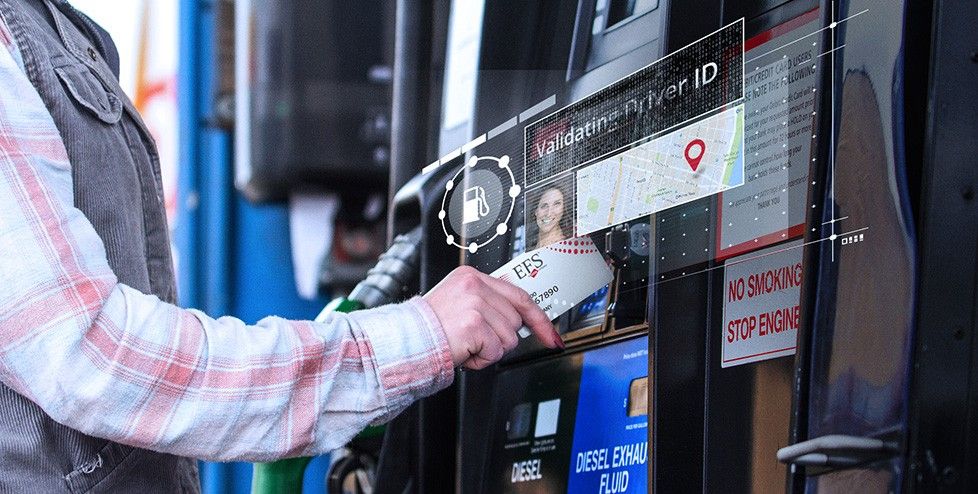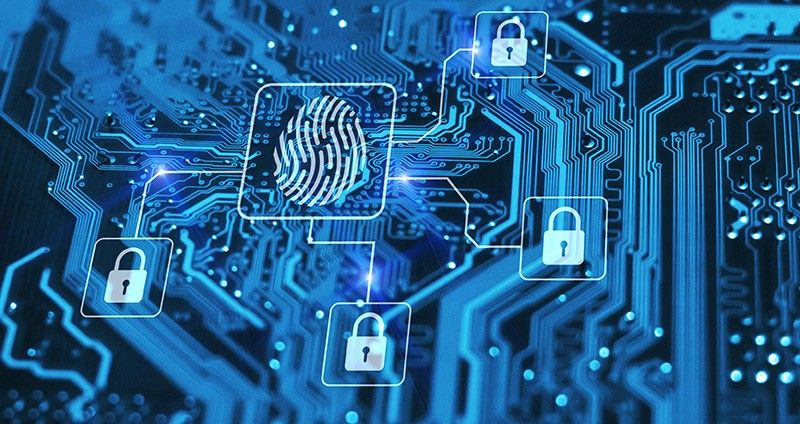Stay connected
Subscribe to our Inside WEX blog and follow us on social media for the insider view on everything WEX, from payments innovation to what it means to be a WEXer.

With technology influencing, guiding, and in some cases controlling certain industries, the standards for how we do business are changing. Digital systems are now pervasive at every step, from how we pay to how we communicate, and our mobile devices are making it all easier than ever before. In the trucking industry, fleet mobile has become a critical tool.
Now that digital has taken over so thoroughly, our digital identities have become a new priority. Concerns over identity verification and ID security have created an entire industry and helped existing providers like Apple and Google flourish further. Some fleet mobile apps even allow drivers access to goods and services via their social media identity credentials.
With the digital identity market expected to reach $15 billion by 2024, major ID providers such as Google and Apple are racing to improve the identity verification experience. Their presence is felt in every corner of digital life: Utilizing these providers to log in to third-party websites has become ubiquitous, along with the ability to pay for goods and services via the developers’ proprietary payment methods.
In trucking and transportation, the reliance on a digital ID is paramount to success. New standards for driver’s licenses and passports are emerging, fostering compatibility with digital integration. There is a lot of talk about what’s ahead, but let’s take a look at the efforts that have already been put into place to help both the private and commercial sectors transition. These trends are particularly relevant to progress in fleet digital, as travel and transportation rely on identity in more than one way.
Digital securities company Gemalto has presented some findings to help the trucking industry better understand the path ahead by first reviewing some of the steps taken up to now.

Digital travel advancements are also becoming critical for the trucking industry. It can be said that secure fleet ID and fleet digital licensing are the most important aspect of over-the-road trucking. The US government understands, recently awarding a federal grant to the US Commerce Department’s National Institute of Standards and Technology (NIST) to study the category. The grant will be used to further support development of trusted identities, based on the digital driver’s license. Multiple steps have taken us to where we are today, and the momentum will continue.
According to experts at Gemalto, a digital identity consulting company, the next two years will see some of the most accelerated evolution so far in the field of secure digital identity. The demands and features expected in private and fleet ID alike may seem obvious but are worth repeating:
The study further details the categories:
ID will become ever more mobile. Of course, it doesn’t take an expert to recognize we’ve entered an era in which mobile connectivity dominates, especially in the trucking and transportation industry. But it’s worth emphasizing that the trend shows no sign of abating, and the implications for digital personal and fleet ID are profound.
Identity is the link that connects an individual to his or her community. For public authorities, the key challenge in the next two years will be to create harmonious digital bonds that secure the relationship between new mobile identities and the wider society. This is possible only through a public framework of trust, built on guarantees of private data protection and security. For fleet mobile, security for individual drivers and fleet Identity is critical for business.
In terms of privacy protection, the General Data Protection Regulation of May 2018 (GDPR) for European Member States represents a major step forward for data protection and privacy. Twenty-eight countries are impacted, including the UK. Yes, you read that right: Five hundred million people have the same law. In August 2017, India’s supreme court ruled privacy a “fundamental right” in a landmark case illustrating that biometric data protection is now on top of the regulators’ agenda in the largest democracy in the world.

Privacy protection laws are being enhanced by Modi’s new government in 2019. The California Consumer Privacy Act (CCPA), voted in at the end of May 2018, will come into force as of January 1, 2020. It is a major step forward for privacy rights as the state is often seen as a trendsetter in this domain – the law is potentially a model for a federal data privacy law. In that sense, the CCPA has the potential to become as important as the GDPR.
Privacy demands rigorous accountability. We’re seeing in 2017-2019 the emergence of a global consensus, its fundamental principle being that mismanagement of personal information will not be tolerated and that companies that do not protect data properly could be hit with large fines. The trucking industry is also taking steps to secure individual and fleet identity.
Trusted partners like EFS/WEX are also doubling down on security within the fleet identity realm. As a payment leader in the industry, EFS/WEX absolutely must protect customers against identity breach and fraud. By developing digital solutions that streamline back office efficiencies, mitigating error and addressing the potential of digital violations and fraud, WEX has become one of the most trusted payment companies in an industry that is already highly susceptible. The EFS/WEX tools and systems provide tightened controls and insights into payment and purchasing that can be used to thwart a fleet mobile breach or fleet identity theft. Real-time purchasing data collected by the company can provide greater visibility and, therefore, more control over the identity of the person who is spending and where.
Around the world, the shift of populations to urban environments is already one of the defining trends of the 21st century. Inevitably, technological developments are becoming inextricably linked with this mass migration. The digital or smart city is becoming the model that ensures consistency in all the links between urbanites, their wider communities, and public authorities. Digital identity is the key that unlocks the individual’s access to a rich array of services and support. Or, to put it another way, the smart city is set to become our new playground. By their very nature, smart cities are mobile environments. Digital ID will therefore represent the “virtual umbilical cord” that continuously links each individual to their public and social life. Digital Identity in the trucking industry will act in the same way.
Connectivity through fleet mobile will also continue to advance, creating opportunities within national and local communities. Security in fleet digital identity will always be urgent as mobility expands both in the cab and on the road.
Faced with an increasingly challenging economic landscape, governments are inevitably searching for new opportunities for harmonious sustainable growth. As regulatory environments take shape, close collaboration between the financial world, central and local public authorities, and digital communications operators will support effective solutions and implementation of best practices. Of course, the real source of new business opportunities is not digital identity itself, but the myriad applications it enables. This is where banks and other operators including fleet payment will see a bottom-line return on their investment. The march of digital ID is well underway. The focus will therefore be on the adoption of the new structures and regulations that are needed to govern the associated services and transactions.

In the years ahead, the market will follow these initiatives. How can we be so sure?
Because evidence of uptake of digital ID and associated services is multiplying, giving us the clearest signals since the concept was first introduced some 15 years ago that a tipping point has been reached.
The digital ID evolution will continue to move forward, and while the private sector will continue to push requirements for security, the trucking industry will benefit from the solutions offered even more than most because of the nature of their mobile business. Digital driver’s licenses, digital social credentials, fleet mobile, and cloud identities put drivers and fleets at risk every day, but with a clear understanding of vulnerabilities and a robust strategy in place to address the potential, the trucking industry could also play a big part in the nation’s digital identity revolution.
RESOURCES:
Subscribe to our Inside WEX blog and follow us on social media for the insider view on everything WEX, from payments innovation to what it means to be a WEXer.